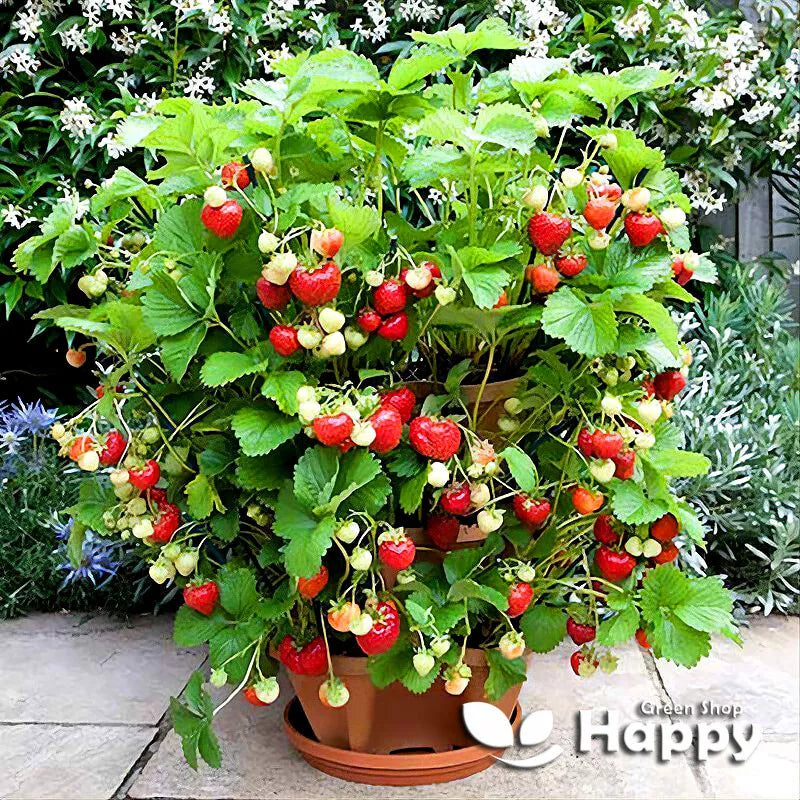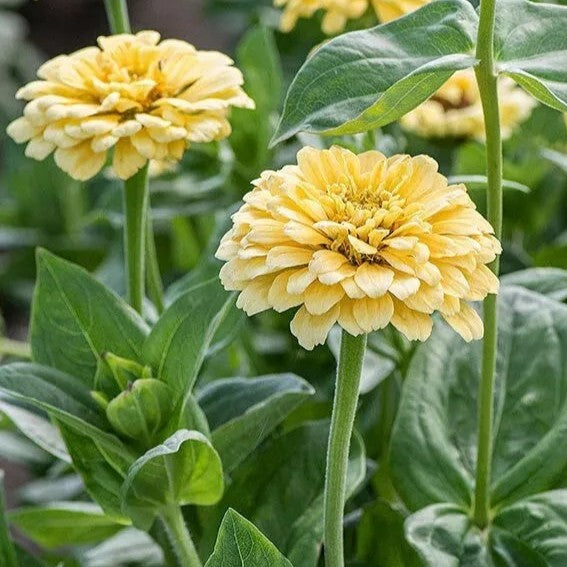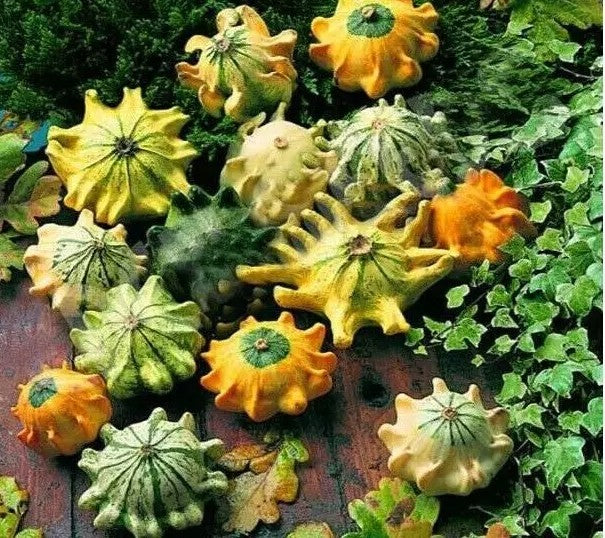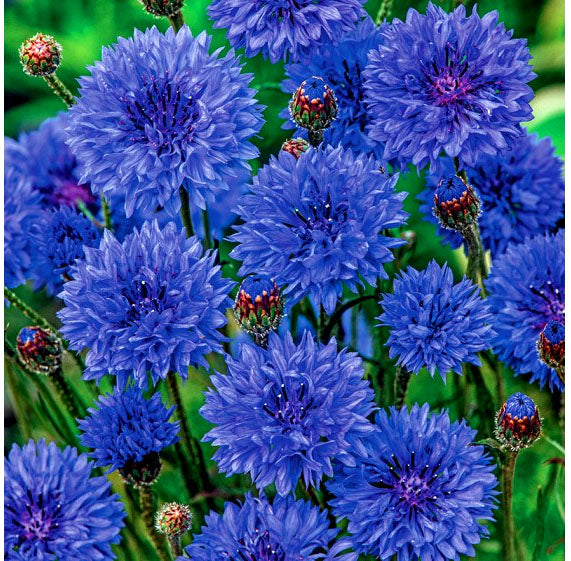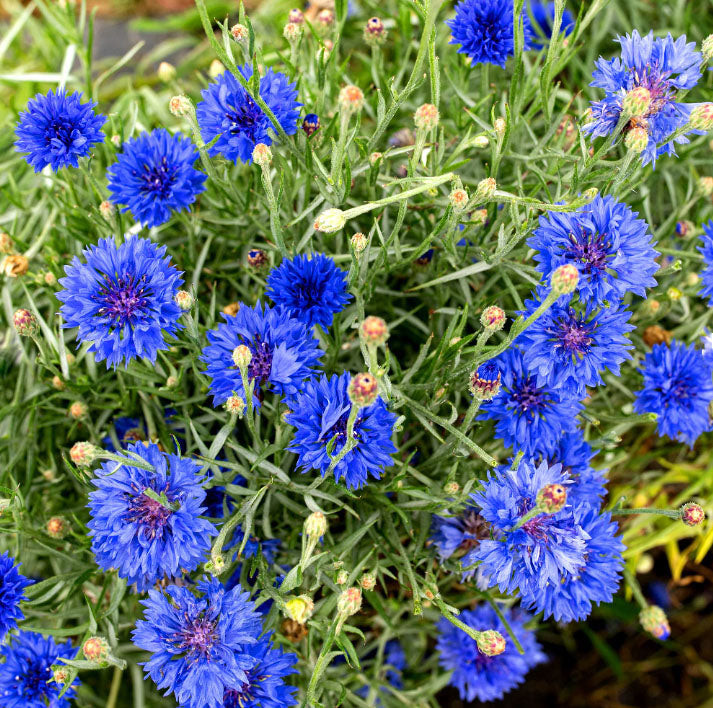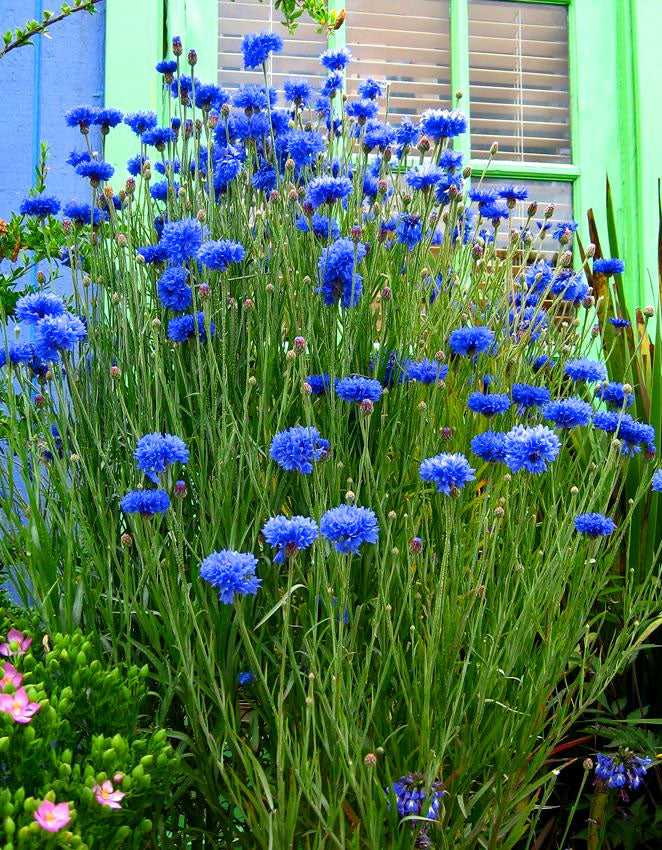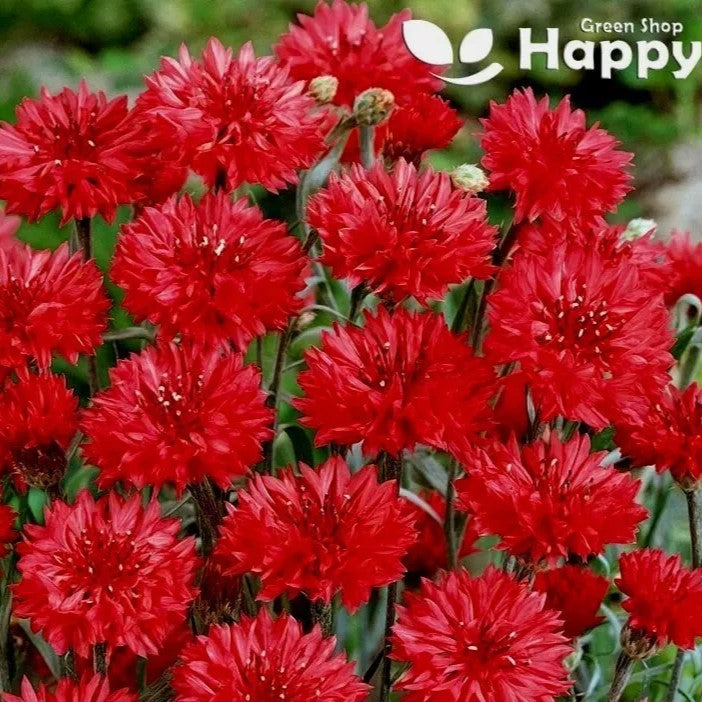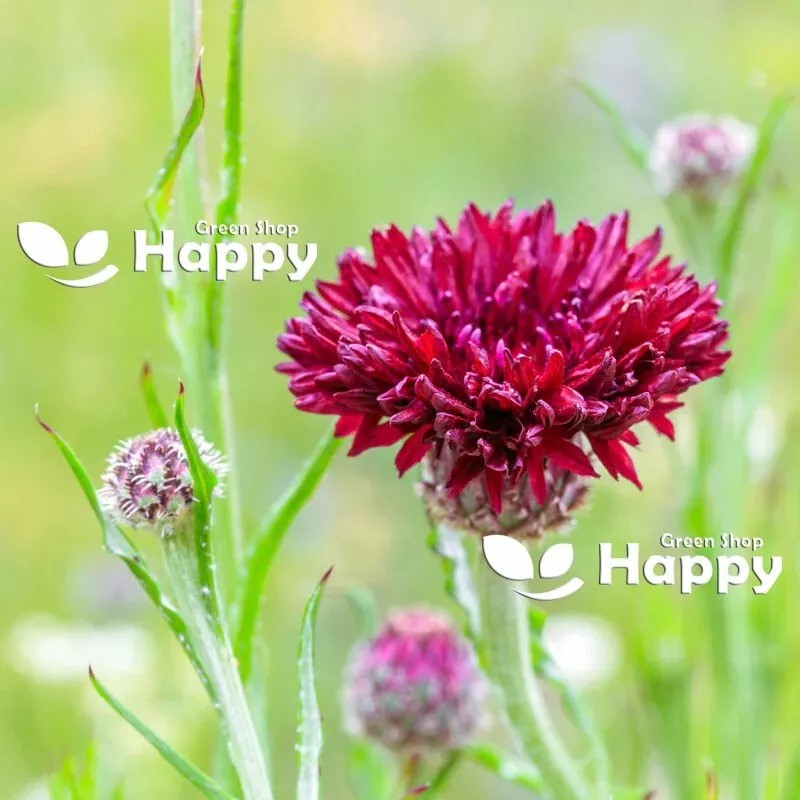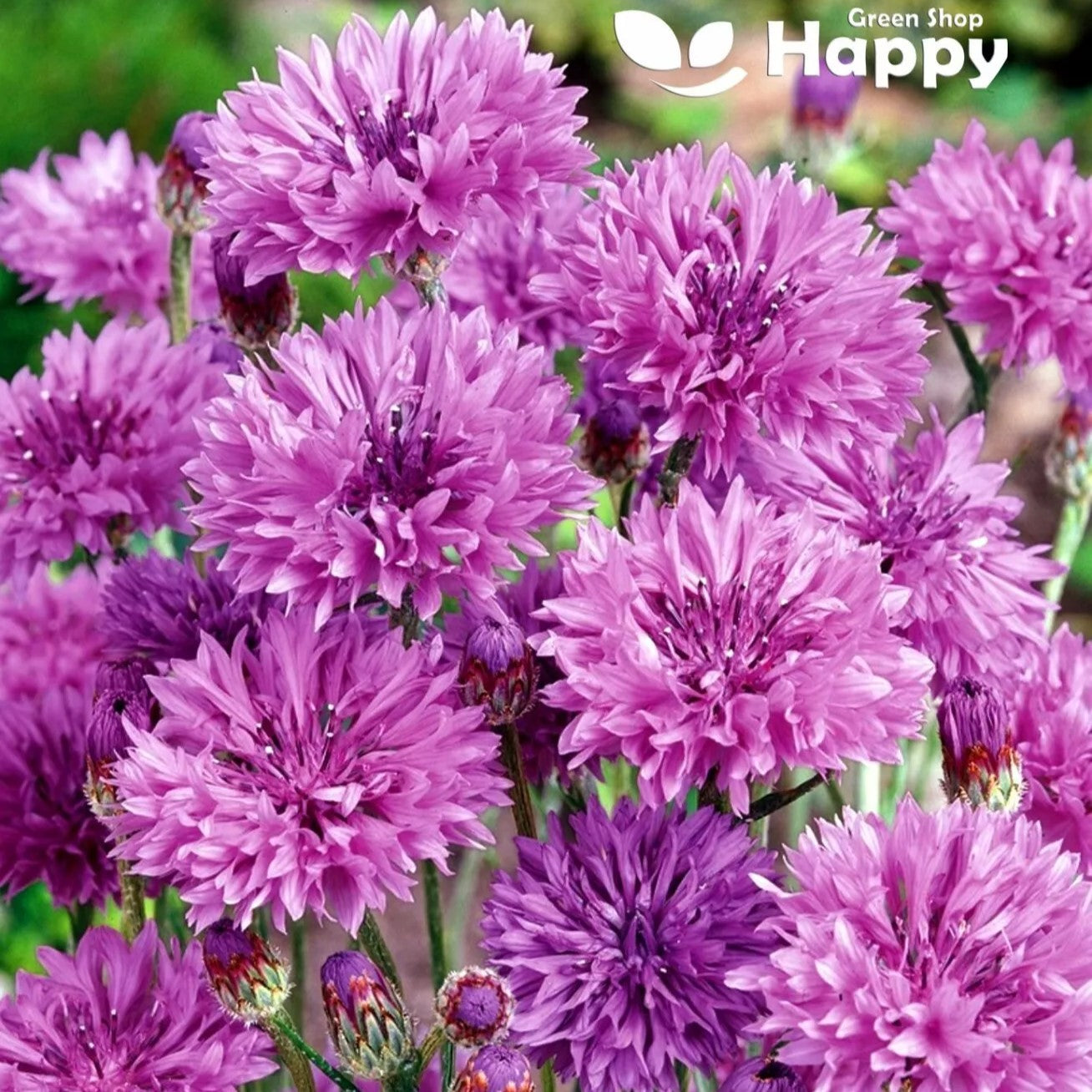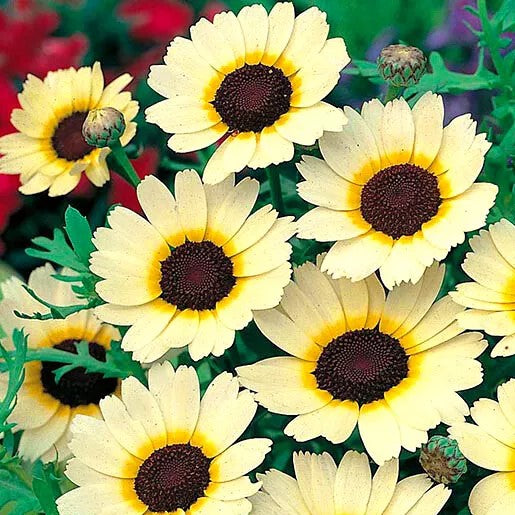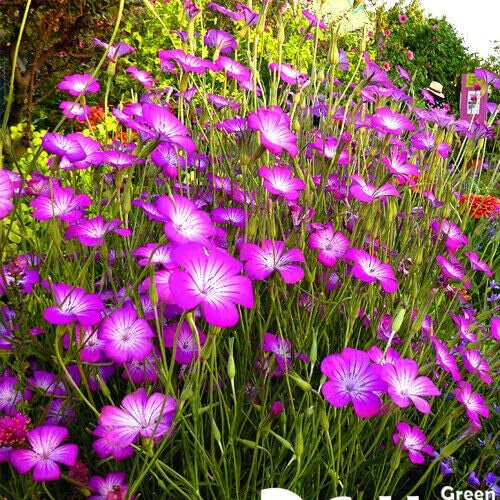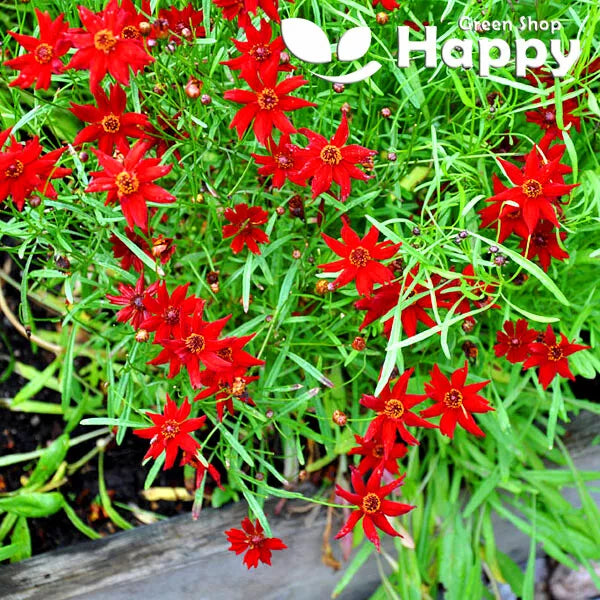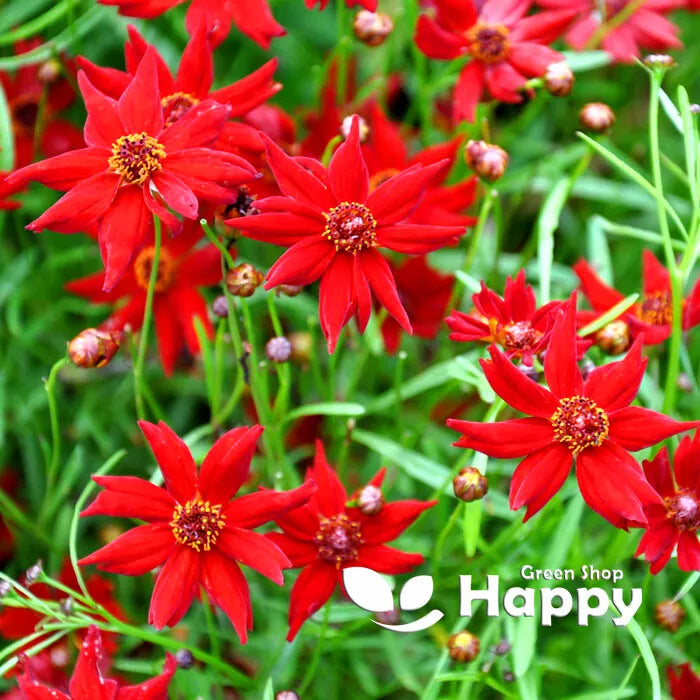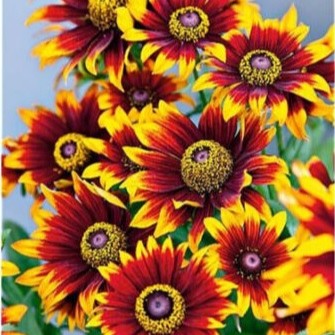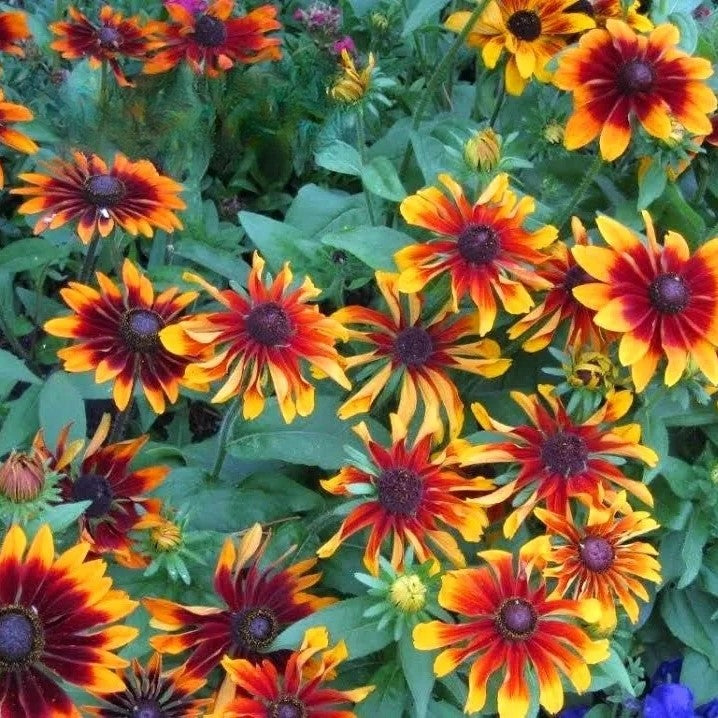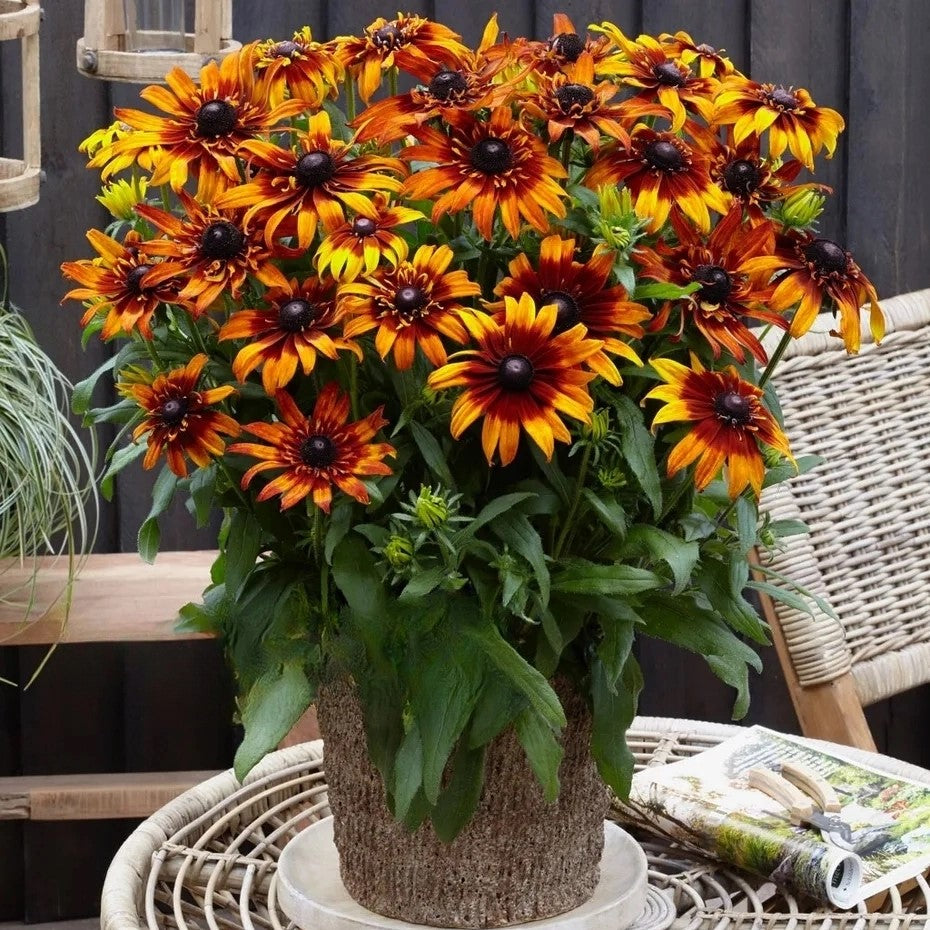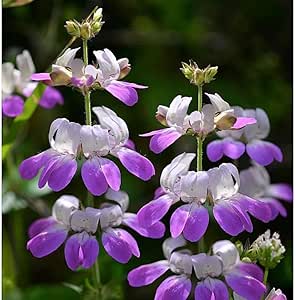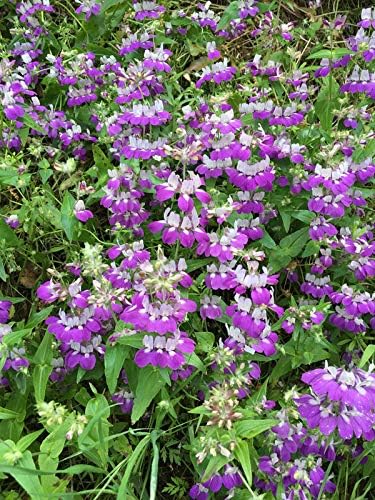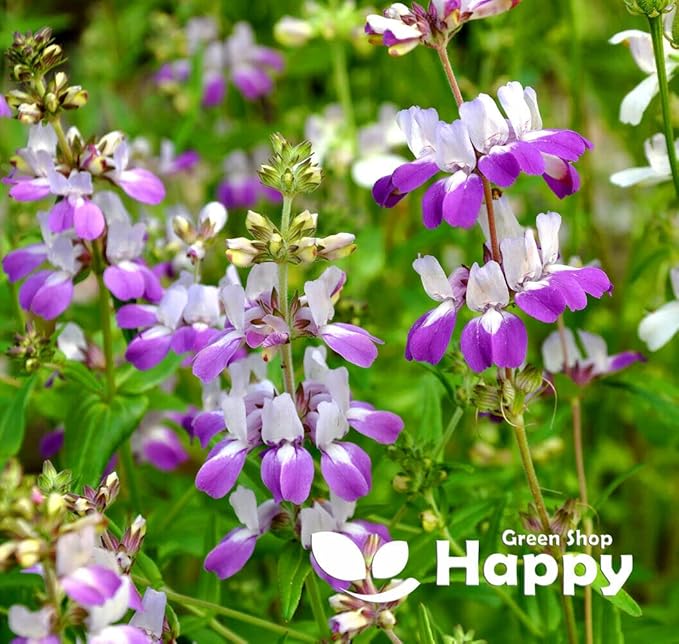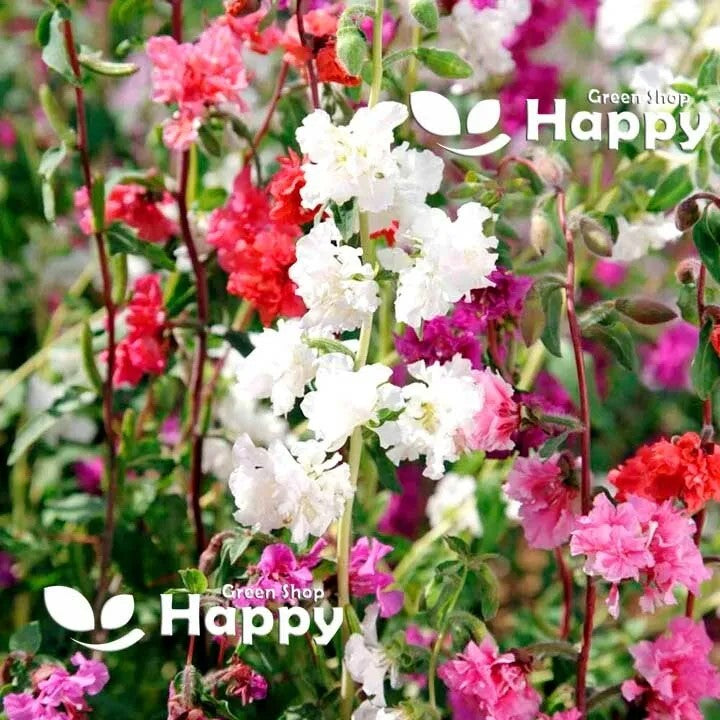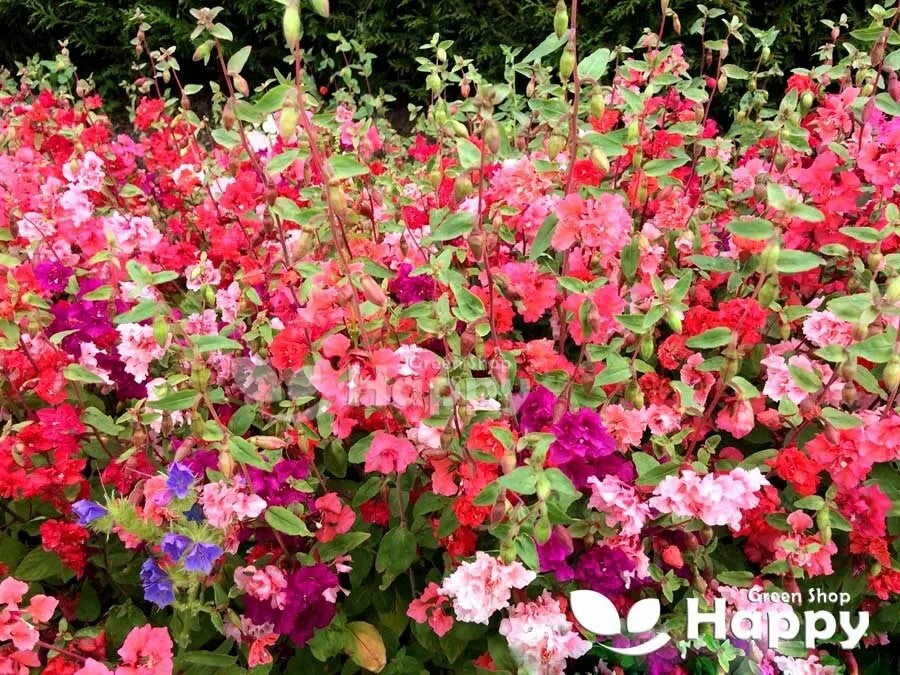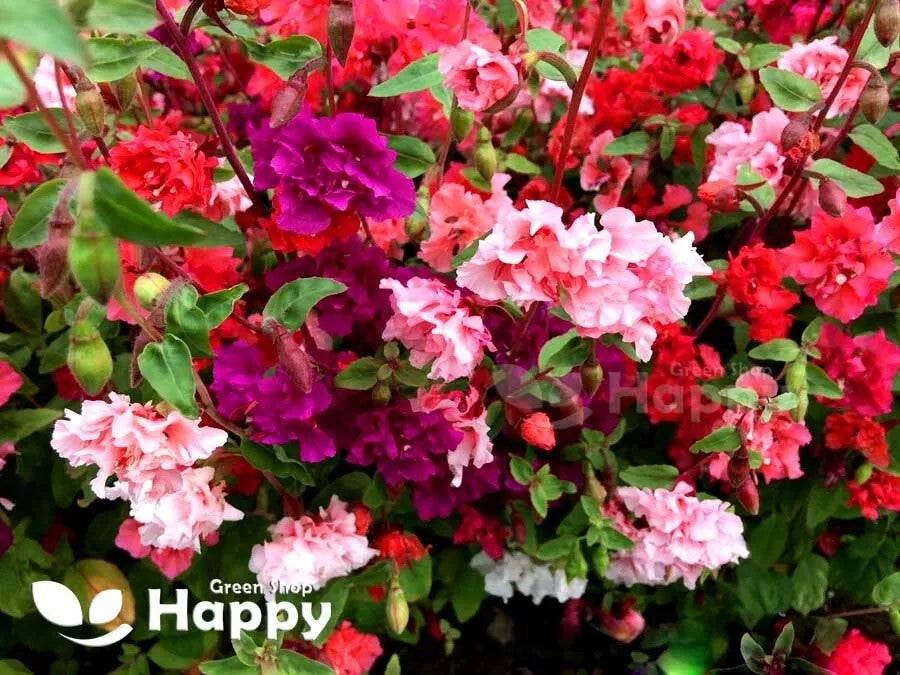Sort by:
211 products
211 products
Cornflower ‘Blue Diadem’ Seeds (Centaurea cyanus)
Add classic cottage garden charm with Cornflower ‘Blue Diadem’ (Centaurea cyanus). This annual produces striking deep blue, fringed flowers that bring vibrant color to borders, meadows, and cutting gardens. Easy to grow and long-flowering, it attracts pollinators and creates a timeless, eye-catching display.
How to Grow
-
Sow directly outdoors in spring or autumn.
-
Use well-drained soil in full sun.
-
Scatter seeds thinly and cover lightly with soil.
-
Keep soil moist until germination (7–14 days).
-
Thin seedlings to 20–25 cm apart once established.
-
Deadhead regularly to prolong flowering and maintain plant vigor.
Key Features
-
Striking deep blue, fringed flowers
-
Hardy annual, easy to grow and long-flowering
-
Ideal for borders, meadows, and cutting gardens
-
Attracts bees, butterflies, and other pollinators
-
Classic cottage garden appeal
Ideal For
-
Flower borders and cottage gardens
-
Meadow-style plantings and naturalized areas
-
Cutting gardens for fresh bouquets
-
Pollinator-friendly landscapes
Sowing
-
Best time: Spring or autumn directly outdoors
-
Germination: 7–14 days
-
Sow thinly, cover lightly, and keep soil moist
-
Prefers full sun and well-drained soil
Quick Tip
-
Sow successive batches every 2–3 weeks in spring to extend the flowering season.
Cornflower ‘Red Ball’ Seeds (Centaurea cyanus) – 500 Seeds
Bring bold color to your garden with Cornflower ‘Red Ball’ (Centaurea cyanus). This annual produces striking, deep red, pom-pom-like blooms that add a dramatic touch to borders, meadows, and cutting gardens. Easy to grow and long-flowering, it’s perfect for gardeners seeking vibrant color and pollinator-friendly planting.
How to Grow
-
Sow directly outdoors in spring or autumn.
-
Use well-drained soil in full sun.
-
Scatter seeds thinly and cover lightly with soil.
-
Keep soil moist until germination (7–14 days).
-
Thin seedlings to 20–25 cm apart once established.
-
Deadhead regularly to encourage continuous blooming.
Key Features
-
Striking deep red, pom-pom-like blooms
-
Hardy annual, easy to grow and long-flowering
-
Ideal for borders, meadows, and cutting gardens
-
Attracts bees, butterflies, and other pollinators
-
Bold, eye-catching color for garden displays
Ideal For
-
Flower borders and cottage gardens
-
Meadow-style plantings and naturalized areas
-
Cutting gardens for fresh bouquets
-
Pollinator-friendly landscapes
Sowing
-
Best time: Spring or autumn directly outdoors
-
Germination: 7–14 days
-
Sow thinly, cover lightly, and keep soil moist
-
Prefers full sun and well-drained soil
Quick Tip
-
Sow in drifts or clusters to maximize visual impact and create a bold color display.
Cornflower ‘Bachelor’s Button Mauve’ Seeds (Centaurea cyanus)
Add timeless charm to your garden with Cornflower ‘Bachelor’s Button Mauve’ (Centaurea cyanus). This annual produces elegant mauve-blue flowers with a delicate, fringed appearance, creating a classic cottage garden feel. Easy to grow and long-flowering, it’s perfect for borders, meadows, and cut flower arrangements, while also attracting pollinators.
How to Grow
-
Sow directly outdoors in spring or autumn.
-
Use well-drained soil in a sunny location.
-
Scatter seeds thinly and cover lightly with soil.
-
Keep soil moist until germination (7–14 days).
-
Thin seedlings to 20–25 cm apart once established.
-
Deadhead regularly to prolong flowering and maintain plant vigor.
Key Features
-
Elegant mauve-blue, fringed blooms
-
Hardy annual, easy to grow and long-flowering
-
Ideal for borders, meadows, and cutting gardens
-
Attracts bees, butterflies, and other pollinators
-
Classic cottage garden appeal
Ideal For
-
Flower borders and cottage gardens
-
Meadow-style plantings and naturalized areas
-
Cutting gardens for fresh bouquets
-
Pollinator-friendly landscapes
Sowing
-
Best time: Spring or autumn directly outdoors
-
Germination: 7–14 days
-
Sow thinly, cover lightly, and keep soil moist
-
Prefers full sun and well-drained soil
Quick Tip
-
For a longer flowering season, sow successive batches every 2–3 weeks during spring.
Corn Marigold ‘Eastern Star’ Seeds (Chrysanthemum segetum)
Corn Marigold ‘Eastern Star’ is an annual wildflower that lights up gardens with vibrant golden-yellow blooms. Blooming from late spring through summer, it adds a cheerful splash of color to borders, wildflower meadows, and cottage gardens. Easy to grow and drought-tolerant, it attracts pollinators and brings a natural, meadow-like charm.
What Makes It Special
-
Bright golden-yellow blooms all summer
-
Hardy, easy-to-grow annual
-
Attracts bees and butterflies
Key Features
-
Botanical name: Chrysanthemum segetum
-
Annual
-
Height: 40–60 cm
-
Bloom time: Late spring to summer
Ideal For
-
Wildflower meadows and naturalized areas
-
Borders and cottage gardens
-
Pollinator-friendly plantings
Sowing
-
Sow outdoors Mar–Jun
-
Cover seeds lightly with soil
-
Germination: 7–14 days at 15–20°C
-
Thin seedlings 20–30 cm apart
-
Flowers the same year
Corn Cockle – Seeds (Agrostemma githago)
Corn Cockle (Agrostemma githago) is a classic wildflower that brings simple charm to any garden. Its tall stems carry graceful, cup-shaped magenta-pink blooms that sway beautifully in the breeze. Once common in cornfields, this heritage flower is now treasured for wildflower meadows, cottage gardens, and naturalistic plantings. Easy to grow and loved by pollinators, it thrives in sunny, well-drained soil.
Why Grow "Corn Cockle"
-
Bright magenta-pink wildflower blooms
-
Tall, graceful stems for naturalistic planting
-
Heritage flower once common in fields
-
Attracts bees and pollinators
Key Features
-
Type: Hardy annual (Agrostemma githago)
-
Height: 60–90 cm
-
Flowering: June–September
-
Position: Full sun
-
Uses: Wildflower meadows, borders, cut flowers
Ideal For
-
Naturalistic and wildlife gardens
-
Wildflower meadows and cottage planting
-
Pollinator-friendly spaces
-
Tall, airy accents in borders
Sowing & Growing
-
Sow outdoors: March–May or August–September
-
Sow direct into prepared soil, lightly cover
-
Germination: 14–21 days
-
Thin seedlings to 25–30 cm apart
-
Prefers full sun and well-drained soil
Coreopsis ‘Amulet Red’ – Seeds
(Coreopsis tinctoria)
Coreopsis ‘Amulet Red’ is a striking annual that produces masses of deep red, daisy-like blooms throughout summer. Its long-lasting flowers attract bees, butterflies, and other pollinators, making it both a decorative and wildlife-friendly choice. Perfect for borders, wildflower gardens, and cutting.
Why Grow Coreopsis ‘Amulet Red’?
-
Abundant deep red daisy-like flowers
-
Long flowering season from summer to autumn
-
Attracts bees, butterflies & pollinators
-
Easy to grow and low-maintenance
Key Features
-
Type: Hardy annual
-
Height: 45–60 cm
-
Flowers: June–October
-
Position: Full sun
-
Soil: Well-drained, moderately fertile
Ideal For
-
Borders and cottage gardens
-
Wildflower-style plantings
-
Pollinator-friendly gardens
-
Cut flower arrangements
Sowing & Growing
-
Sow outdoors: April–May in prepared soil, thin seedlings as needed
-
Sow indoors: March–April in trays, plant out after last frost
-
Germination: 7–14 days at 18–22°C
-
Spacing: 20–25 cm apart
-
Deadhead spent blooms to prolong flowering
Coneflower 'Orange Fudge' Seeds (Rudbeckia hirta)
Bring warm, glowing color to your garden with Coneflower 'Orange Fudge'. This striking Rudbeckia variety produces rich orange petals with a warm golden touch and dark contrasting centers. Long-flowering and easy to grow, they add bold charm to borders, wildlife gardens, and cut flower arrangements.
What Makes It Special
-
Unique orange blooms with dark centers
-
Long-lasting flowers from summer to autumn
-
Attracts bees, butterflies, and pollinators
Key Features
-
Botanical name: Rudbeckia hirta
-
Hardy annual / short-lived perennial
-
Height: 50–60 cm
-
Blooming period: July–October
-
Drought-tolerant and low maintenance
Ideal For
-
Cottage and wildlife gardens
-
Borders and mixed beds
-
Summer cut flower bouquets
Sowing
-
Sow indoors from February–April or outdoors from May
-
Lightly cover seeds and keep moist (germination: 14–21 days at 18–22°C)
-
Transplant seedlings after frost into sunny, well-drained soil
-
Flowers in the first season
Chinese Houses Seeds (Collinsia heterophylla)
The Chinese Houses is a charming annual wildflower, native to California, producing delicate whorls of purple and white, two-tone blossoms stacked like little pagodas. Its unique form and soft colors make it a lovely choice for borders, wildflower meadows, or naturalistic plantings. Easy to grow, it self-seeds readily and attracts bees and butterflies.
What Makes It Special
-
Distinctive tiered flowers resembling miniature pagodas
-
Native wildflower, easy to grow and care for
-
Attracts bees, butterflies, and other pollinators
Key Features
-
Botanical name: Collinsia heterophylla
-
Hardy annual
-
Height: 30–50 cm (12–20 in)
-
Bloom time: Late spring to summer
Ideal For
-
Wildflower and meadow-style gardens
-
Cottage and naturalistic borders
-
Pollinator-friendly plantings
Sowing
-
Sow directly outdoors Mar–May or Aug–Sep for earlier blooms
-
Lightly cover seeds with soil
-
Germination: 14–21 days at 15–20°C
-
Thin seedlings 15–20 cm apart
-
Flowers in the same year
Clarkia Garland Flower Double Mix - 3000 seeds (Clarkia unguiculata elegans)
£1.15
Unit price perClarkia Garland Flower Double Mix - 3000 seeds (Clarkia unguiculata elegans)
£1.15
Unit price perClarkia Garland Flower Double Mix – 3000 Seeds (Clarkia unguiculata elegans)
Bring charm and colour to your garden with Clarkia Garland Flower Double Mix. These graceful annuals produce tall spikes packed with double, rose-like blooms in a range of pinks, purples, reds, and whites. Perfect for cutting, borders, or naturalized displays, Clarkia is a classic cottage garden favourite.
What Makes It Special
-
Abundant double blooms with a romantic, rose-like look
-
Wide mix of bright, cheerful colours
-
Excellent for cut flowers with long vase life
-
Easy to grow, reliable, and fuss-free
Key Features
-
Hardy annual
-
Height: 60–90 cm
-
Blooms summer to early autumn
-
Prefers full sun and well-drained soil
-
Attracts pollinators, especially bees and butterflies
Ideal For
-
Cottage gardens and wildflower borders
-
Cut flower arrangements
-
Mass planting for colourful displays
-
Pollinator-friendly planting
Sowing
-
Sow directly outdoors in spring after frost
-
Lightly rake seeds into prepared soil, keep moist
-
Germination: 14–21 days
-
Thin seedlings to 20–30 cm spacing
-
Water regularly but avoid waterlogging
Showing 180/211


